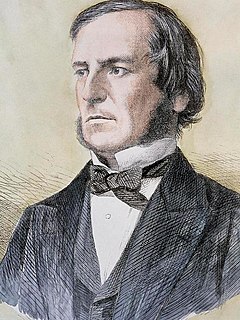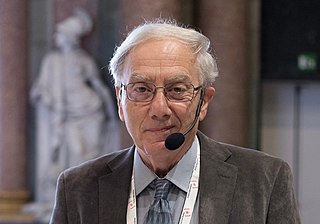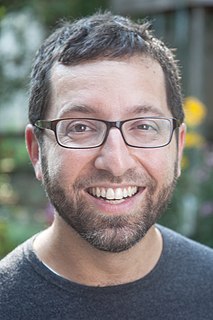
Martin Gardner was an American popular mathematics and popular science writer with interests also encompassing scientific skepticism, micromagic, philosophy, religion, and literature – especially the writings of Lewis Carroll, L. Frank Baum, and G. K. Chesterton. He was also a leading authority on Lewis Carroll. The Annotated Alice, which incorporated the text of Carroll's two Alice books, was his most successful work and sold over a million copies. He had a lifelong interest in magic and illusion and in 1999, MAGIC magazine named him as one of the "100 Most Influential Magicians of the Twentieth Century". He was considered the doyen of American puzzlers. He was a prolific and versatile author, publishing more than 100 books.

Vladimir Igorevich Arnold was a Soviet and Russian mathematician. While he is best known for the Kolmogorov–Arnold–Moser theorem regarding the stability of integrable systems, he made important contributions in several areas including dynamical systems theory, algebra, catastrophe theory, topology, algebraic geometry, symplectic geometry, differential equations, classical mechanics, hydrodynamics and singularity theory, including posing the ADE classification problem, since his first main result—the solution of Hilbert's thirteenth problem in 1957 at the age of 19. He co-founded two new branches of mathematics—KAM theory, and topological Galois theory.

George Boole was a largely self-taught English mathematician, philosopher, and logician, most of whose short career was spent as the first professor of mathematics at Queen's College, Cork in Ireland. He worked in the fields of differential equations and algebraic logic, and is best known as the author of The Laws of Thought (1854) which contains Boolean algebra. Boolean logic is credited with laying the foundations for the Information Age.

Ian Nicholas Stewart is a British mathematician and a popular-science and science-fiction writer. He is Emeritus Professor of Mathematics at the University of Warwick, England.

Concepts of Modern Mathematics is a book by mathematician and science popularizer Ian Stewart about recent developments in mathematics. It was originally published by Penguin Books in 1975, updated in 1981, and reprinted by Dover publications in 1995 and 2015.
Popular mathematics is mathematical presentation aimed at a general audience. Sometimes this is in the form of books which require no mathematical background and in other cases it is in the form of expository articles written by professional mathematicians to reach out to others working in different areas.

Mario Livio is an Israeli-American astrophysicist and an author of works that popularize science and mathematics. For 24 years (1991-2015) he was an astrophysicist at the Space Telescope Science Institute, which operates the Hubble Space Telescope. He has published more than 400 scientific articles on topics including cosmology, supernova explosions, black holes, extrasolar planets, and the emergence of life in the universe. His book on the irrational number phi, The Golden Ratio: The Story of Phi, the World's Most Astonishing Number (2002), won the Peano Prize and the International Pythagoras Prize for popular books on mathematics.

Jordan Stuart Ellenberg is an American mathematician who is a professor of mathematics at the University of Wisconsin–Madison. His research involves arithmetic geometry. He is also an author of both fiction and non-fiction writing.

Does God Play Dice: The New Mathematics of Chaos is a non-fiction book about chaos theory written by British mathematician Ian Stewart. The book was initially published by Blackwell Publishing in 1989.

Jan Gullberg was a Swedish surgeon and anaesthesiologist, but became known as a writer on popular science and medical topics. He is best known outside Sweden as the author of Mathematics: From the Birth of Numbers, published by W. W. Norton in 1997 (ISBN 039304002X).

Edward Vladimirovich Frenkel is a Russian-American mathematician working in representation theory, algebraic geometry, and mathematical physics. He is a professor of mathematics at University of California, Berkeley, a member of the American Academy of Arts and Sciences, and author of the bestselling book Love and Math.

Sir Martin Hairer is an Austrian-British mathematician working in the field of stochastic analysis, in particular stochastic partial differential equations. He is Professor of Mathematics at EPFL and at Imperial College London. He previously held appointments at the University of Warwick and the Courant Institute of New York University. In 2014 he was awarded the Fields Medal, one of the highest honours a mathematician can achieve. In 2020 he won the 2021 Breakthrough Prize in Mathematics.

Alexander Bellos is a British writer, broadcaster and mathematics communicator. He is the author of books about Brazil and mathematics, as well as having a column in The Guardian newspaper.

The Great Mathematical Problems is a 2013 book by Ian Stewart. It discusses fourteen mathematical problems and is written for laypersons. The book has received positive reviews.
Suzanne Marie Lenhart is an American mathematician who works in partial differential equations, optimal control and mathematical biology. She is a Chancellor's Professor of mathematics at the University of Tennessee, an associate director for education and outreach at the National Institute for Mathematical and Biological Synthesis, and a part-time researcher at the Oak Ridge National Laboratory.

Eugenia Loh-Gene Cheng is a British mathematician and concert pianist. Her mathematical interests include higher category theory, and as a pianist she specialises in lieder and art song. She is also passionate about explaining mathematics to non-mathematicians to rid the world of math phobia, often using entertaining analogies with food and baking. Cheng is a scientist-in-residence at the School of the Art Institute of Chicago.

Burkard Polster is a German mathematician who runs and presents the Mathologer channel on YouTube.

Significant Figures: The Lives and Work of Great Mathematicians is a 2017 nonfiction book by British mathematician Ian Stewart, published by Basic Books. In the work, Stewart discusses the lives and contributions of 25 figures who are prominent in the history of mathematics. The 25 mathematicians selected are: Archimedes, Liu Hui, Muḥammad ibn Mūsā al-Khwārizmī, Madhava of Sangamagrama, Gerolamo Cardano, Pierre de Fermat, Isaac Newton, Euler, Fourier, Gauss, Lobachevsky, Galois, Ada Lovelace, Boole, Riemann, Cantor, Sofia Kovalevskaia, Poincaré, Hilbert, Emmy Noether, Ramanujan, Gödel, Turing, Mandelbrot, and Thurston.

In Pursuit of the Unknown: 17 Equations That Changed the World is a 2012 nonfiction book by British mathematician Ian Stewart, published by Basic Books. In the book Stewart traced a history of the role of mathematics in human history, beginning with the Pythagorean theorem to the equation that transformed the twenty-first century financial market, the Black–Scholes model.

















